|
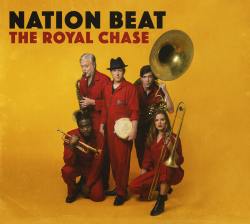
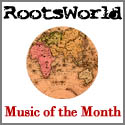
|
-
“Some of my biggest influences were people like Louie Armstrong, Professor Longhair, Dr. John, Jackson do Pandeiro, Luis Gonzaga, Chico Science. If those artists were alive today and we put them in a studio and recorded an album, what would it be? That was the inspiration,” says drummer Scott Kettner. When Nation Beat released its first album in 2005, the shorthand description of their sound usually was that it was a pairing of American country music with the Brazilian country music from the northeast. On the second, 2008’s Legends of the Preacher, the band reimagined Hank Williams “I’m so Lonesome I Could Cry” with a Brazilian syncopated beat, but the other cuts on the album were literally all over the map, touching on funk and soul too.
The Royal Chase now features Kettner on percussion and four brass players. The title of the new album hints at what has been going on with Kettner. “I’m always chasing something and I don’t always know what it is, but it drives me. It makes me practice and keep recording albums. I never feel like I’ve completed it….I’m trying to get to something and that’s my royal chase.”
Marty Lipp talks with Kettner, and reviews Nation Beat's latest album.
|
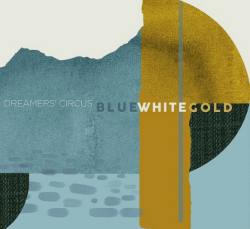
|
-
What do you do after you’ve celebrated 10 years together as a band? How do you keeping going and still have it sounding as fresh and new as it did at the start? There’s no easy answer, of course. And when Dreamers’ Circus recorded Blue White Gold in 2019, nobody could envision what 2020 would become. Yet, unwittingly, they seem to have made a CD that fits perfectly the times in its mix of beauty, jauntiness and hope.
Chris Nickson wakes up to the striped down sound of this wonderful Copenhagen-based ensemble.
|
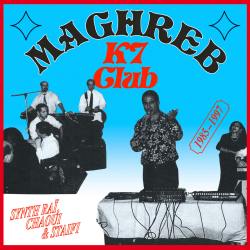
|
-
Waves of Algerians have been making France home for over 100 years now, escaping regressive Algerian politics or in search of better work opportunities. Whatever the case, it makes sense that the home of the colonizer would include among its population thousands of people representing the (formerly) colonized. Cities such as Paris, Marseilles, and Lyon have the largest concentrations of North Africans, and despite the racism these folks have felt in this country, they have been re-defining French culture for decades. Algerians are French, so it’s natural that these cities became the focal points for musical recordings such as the tracks collected in Maghreb K7 Club: Synth Raï, Chaoui & Staifi 1985-1997, all of which are the product of Maghrebis living in Lyon. This collection allows tracks initially produced on cassette in the Guillotiere district of Lyon by the musicians dominating the area’s scene at the time their first vinyl release. In fact, this place had been a hub for Algerian culture for years, so there was something of a musical synthesis taking place, which helps account for the wide-ranging styles here. Because, while the term Rai is often used to represent much late 20th-century Algerian pop, there’s more to it than this.
Delve in to this unique collection with Bruce Miller.
|

|
-
The third album of the Andalusian sextet La Banda Morisca retains much of the flavor of the group’s first two discs, while moving the band’s sound forward into new territory. Informed by the traditions of old Al-Andaluz, the longest-Islamicized region of Spain which also maintained long standing ties with the Middle East, the Maghreb and other parts of the Mediterrranean and Africa, their new disc is quite well polished for a global audience. While the Arabic influences on Spanish music are obvious, La Banda Morisca makes the connection explicit, following on the success of Andalucia’s Radio Tarifa and such Valencian singers such as Miquel Gil and Carles Denia. Read David Cox review of Gitana Mora.
|

|
-
The music on this disc resides in a place many would consider either anti-science, or at the very least see as the type of woefully ignorant occurrence that happens when modern medicine isn’t as readily available as it should be. Certainly, in Northern Malawi, one of the poorest places on earth and also where these performances were recorded, Christians, themselves espousing the often-dangerous beliefs of the colonizers, see what’s on offer here as an embarrassment. Yet, with the continued existence of these types of performances come places to have conversations about cultural preservation, resistance, and music and dance as therapy and performance as art. Consider the fact that Music Therapy is a clinical, evidence-based science in the west. Vimbuza, the music and dance on offer on this collection, tends to occur at night and at least in this area, under the leadership of Doctor Kanuska, who is a well-respected figure in the villages of the Northern Mzimba region.
Read Bruce Miller's review of Mutende Mizumu by Doctor Kanuska Group.
|
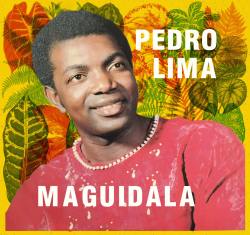
|
-
There was no more radical shift in production and/or styles in popular music than the jarring lurch that happened in many parts of the globe at the dawn of the 1980s... For lovers of buoyant, body moving, raw guitar-based music everywhere, Sao Tomé and Principe were still churning out the heavy stuff as late as 1985, as this collection of extended rhumba and puxa jams so emphatically demonstrates. A companion to Bongo Joe’s recent compilation from these islands, and featuring a single artist and only 4-extended tracks long, Pedro Lima's
Maguidala is perhaps even more consistent than its predecessor. Lima, who died in 2019 at the age of 74, had been gigging with bands since he was a teenager, including his family band Os Leoneses. His voice conveys a subtle warmth over simmering, intertwining guitar patterns for a sound that might be mistaken for anything from soukous to benga. But what’s on offer here doesn’t quite sound like anything else from the time or region...
Read Bruce Miller's review and listen to 2 tracks
|
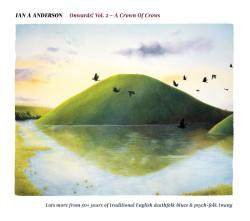
|
-
Veteran English musician Ian A. Anderson has made good use of lockdown... This second decades-spanning compilation takes in most facets of his musical interests, with a number of cuts appearing on CD for the first time, like the possibly apt-for-the-times “Another Normal Day” from his Hot Vultures years, a song that bounces into the brain... What’s so refreshing is that the quality is high throughout – no barrels scraped here, not even close - which makes you wonder how much more excellent music he has hidden away in his cellar.
Read Chris Nickson's review and hear some of the music.
|

|
-
Bucking the trend for brash West African desert rock and blues (Tinariwen and their ilk), this solo debut from Tidiane Thiam offers an altogether gentler kind of guitar music from the region. The album’s title translates as “Remember," most apt given that many of the melodies here can be traced back as far as the 11th Century. Thiam, who is a photographer, visual artist and folklorist as well as a guitarist, is eager to keep alive the traditional sounds of northern Senegal. Recorded in his riverside hometown of Podor, the country’s northern-most outpost (the last stop before Mauritania) Siftorde shows how simple is sometimes best.
Read Jamie Renton's review and listen.
|
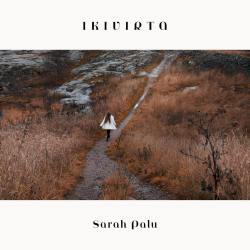
|
-
Although Sarah Palu has made a name for herself as a film composer in Finland, and plays in a few bands, this is her debut as a solo artist, and on it she’s set the bar incredibly high for the future. While plenty of albums are tucked away after a week or two, this one sticks around and practically demands to be played, its nooks and corners are slowly discovered. Palu is primarily a kantele player, but she hardly defines by it. There’s an emphasis on strings, but the music she’s written, played by herself and several others, flows rapidly and easily across stylistic borders. Not folk, not dance, not world. About all you can say is that it’s always decidedly Northern.
Read Chris Nickson's review and listen to some music.
|
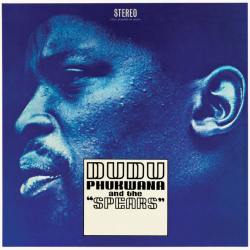
|
-
Before Matsuli became a record label, it was a blog doing hungry music fans a solid by posting mp3s of live gigs, rare, out of print LPs, and generally being among a flurry of online activity then equipping folks such as myself with African sounds we either never thought we'd hear, or never knew existed in the first place. Matt Temple, the man behind the label, which kicked off in 2010 and focused on 1970s South African reissues, shined some much needed light on little known artists and styles, and the goods keep coming with three new albums this summer by Dudu Pukwana, Busi Mhlongo and Zorro Five. Read Bruce Miller's review of all three and listen to a track from each.
|


|
-
Siti of Unguja (Romance Revolution on Zanzibar) is a tribute to a pioneering woman artist, Siti Binti Saad (1890-1950). It celebrates, amplifies and updates the ages-old genre of music unique to Zanzibar, taarab. Remarkably, Siti Binti Saad was able to wrest taarab from the province of men only, appearing as a lead performer who opened the way for other Zanzibari women musicians. Remarkably, too, she introduced lyrics to her songs that addressed the exploitation of women, classism and corruption.
What makes this both a tribute to the past and a compelling contemporary playlist goes beyond the music itself and the masterful arrangements: for the first time we hear the voice of Siti Binti Saad's great-granddaughter, Siti Muharam. Siti Muharam had lived for many years silently on Zanzibar with her fabled legacy, until she was coaxed into recording her great grandmother's repertoire. Listening to Muharam is like opening and savoring the flacons of a collection of precious Zanzibari spices; each song, each instrument and player, has its own flavor, while together they create a dreamy bouquet, an East African garam masala. Hear some of the music and read Carolina Amoruso's full review.
|

|
-
The members of Fiolministeriet (The Ministry of Fiddles) have all been busy, but it’s taken than nine years to finally getting around to follow-up to the eponymous debut and we barely bat an eyelid. Still, they’ve returned with the outstanding Et Nyt Life, and it really does sound like a rebirth; straight out of the traps it’s full of passion. On “Riga Balsam” you can hear the raw scrape of bow on string and almost feel the texture of the wood. Even in the interlacing of its slower, delicate middle section that earthy sense remains. It’s a powerhouse beginning to an album, the execution joyful and full-blooded...
Read Chris Nickson's full review and listen to the music in RootsWorld
|

|
-
The three Lithuanian women who make up Sen Svaja claim to possess origins of pixies. While that intriguing idea of their ancestry may or may not be true (who can be certain in the Baltic or Nordic countries?), there's certainly some dark magic about the music they make on Kraitis Is Pelkes. The title means 'the dowry from the swamp,' and it's filled with riches from across Europe; mostly their homeland, but some songs have their beginnings as far away as Turkey, Britain, and Norway. "Ralia Rolia" sets the tone for the disc, a shepherd's song that seems to be steeped in shadow: there's an insistent zither riff, some brooding bass – the subtle programming complements the arrangement – and the very eerie mix of the three voices. It really does contain something of the otherworldly. Maybe not a swamp, perhaps a portal hidden in slab of rock that leads to a stranger world... Chris Nickson takes you into this strange place.
|
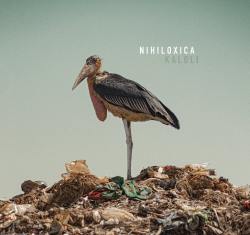
|
-
The sextet Nihiloxica - featuring two Europeans on kit drums and electronics, and four Ugandans who live and play traditional hand drums in Kampala as the Nilotika Cultural Ensemble - is named after the giant Marabou storks found in much of sub-Saharan Africa. These birds, nearly as tall as people, ugly and menacing, are scavengers on the ground but graceful in the air. None of this describes this band, though like the Marabou stork, Nihiloxica thrive in Kampala and elsewhere... Kaloli should surprise no one who's heard the band's earlier releases. Perhaps the sounds are bit less jagged in their force, but the dark, wasteland-washes of synth never disguise this as music to get physical with. Its primary concern is equal parts dance and trance, something percussion ensembles all over the African continent honed to perfection centuries ago. In that sense, Nihiloxica perform an update on ancient ritual that connects them equally to contemporary artists and to a variety of age-old regional Ugandan drum styles.
Listen in, and read Bruce Miller's review.
|

|
-
The third full-length CD from Estonian band Trad. Attack! finds Sandra Vabarna (vocals, Estonian bagpipes, Jew’s harp), Jalmar Vabarna (12-string guitar, vocals), and Tõnu Tubli (drums, percussion, trombone, glockenspiel, vocals) firing on all cylinders. Make Your Move is a fierce and fearless treatment of traditional material, and in this surreal time of worldwide pandemic, you do not want to miss this album. Since 2014, Trad. Attack! have been focused on updating the sound of Estonian folk music. The band has always exuded a feeling of joy and playfulness, and they do not shy away from pop gloss, the dance floor, or fully utilizing the recording studio to realize their vision. Each album has opened up new routes for Trad. Attack!, and Make Your Move is full of strong musicianship, electronic flourishes, and punk energy.
Lee Blackstone rocks out in Tallinn.
|
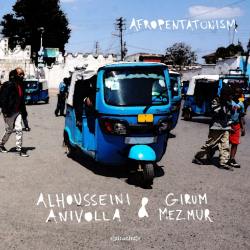
|
-
Collaborations between musicians from seemingly disparate cultures or geographically distant places are certainly nothing new; they also often serve more to show listeners what these ostensibly dissimilar cultures actually have in common, as so much music is coincidentally or otherwise connected by instrumentation, tone, or rhythm... Yet, the musicians on Afropentatonism are from a different version of the typically problematic terms “east” and “west,” in this case Niger and Ethiopia, both landlocked African nations with undeniably rich music scenes that have received more global attention over the last 20 years. Guitarist Alhousseini Anivolla is known for his work with Etran Finatawa, while Girum Mezmur, a musical chameleon, tends to lend his six-string energy to western-derived soul-jazz fusion all the while doing a huge part to keep Addis Ababa’s fertile musical scene chugging along. Because Mezmur, who has been on the scene for closer to 30 years, can be found playing in any number of styles, it’s not surprising that he bends to compliment and comment on his West-African partner’s grooves here for music that fits right into the single-chord hypnosis Tuareg desert guitar is famous for invoking.
Read Bruce Miller's review and listen to some of the music
|
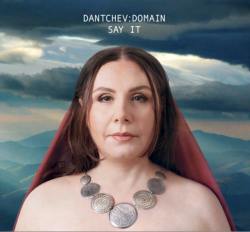
|
-
“The simple fact is that I love brass instruments and percussions,” says Anna Dantchev about the configuration of instruments on her new work with her band, Dantchev:Domain.
Say It painstakingly places and moves sounds about to express a mood, a feeling, a memory, like the pieces on a chessboard, locked in harmony instead of battle. Dantchev’s compositions, her vocals, and arrangements combine to craft an audio memoire using intriguing instrumentation, that creates a sometimes solemn and martial sound defined by the deep brass of sousaphone, tuba and trombone. Dantchev’s voice, too, is brassy and round with a slight bell-ringing vibrato. Percussionthe battery includes a drum kit, an assortment of individual drums and small percussion instruments, and Dantchev’s tupan, a traditional Bulgarian, two-headed drum complements the brass to create an unusual, yet successful coupling that achieves a big, though tempered, sound. Key to taming that brashness is the frequent intercession of guitar and vibraphone.
http://www.rootsworld.com/reviews/dantchev-20.shtml
Carolina Amoruso shares her thoughts on the music.
|


|
-
From Honduras, singer Nohelia Sosa intertwines her evocative alto with the discreet backing of her band, Sus Santos: guitarist Randy Sanchez, bassist Justin Bransford, and singer-songwriter-drummer-percussionist Rafael Herrera. They convene fluently where Latin folkloric, pop, canción romántica and rock en español meet R&B;, C&W;, and rock ‘n’ roll. The consequence is a fluent hemispheric sound attuned to the changing demographics, diversifying complexion, and hybrid vitality of artistic expression north of the Rio Grande, not a line of division or great wall, but an embracing cultural bridge linking with, indeed celebrating what the Americas may yet become.
Read Michael Stone's full review of Nohe & Sus Santos' Tempestad and listen to some songs.
This is our Music of the Month selection for July, 2020. Subscribe, or get just this CD, and support RootsWorld with your donation.
|
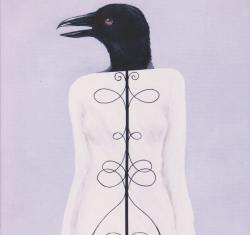
|
-
Back around 2006, I was a fortunate guest at what might have been the world's first streaming festival, with two full nights of Danish roots music. One of the performers was Eivør, who took to the stage solo and put on a mesmeric performance that sometimes became shamanic. By that time the Faroese (Faroe Islands are part of Denmark *) singer-songwriter had made a name for herself, building a career that had seen her working with Canadian guitarist Bill Bourne, winning awards and becoming almost a household name in Iceland. Krákan, arriving in 2003, when Eivør was just 20, predates any of those strains of fame, is an accomplished second album that comes from a period of great and glorious experimentation, backed by drums, guitar, and bass. Just reissued, it's a chance to look back at an album that is not only adventurous, but a bit of a masterpiece.
Chris Nickson looks back and shares some of the songs.
|
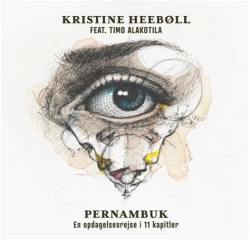
|
-
Pernambuco (the hardwood often used to make violin bows), by the duo of Danish fiddler Kristine Heebøll and Finnish pianist Timo Alakotila, had its genesis in a session three years ago at a music composition camp.
“We started jamming one night, first traditional tunes and tunes we both knew, but after a while I threw in one of my own tunes and what came out of Timo’s hands was just like a dream!” Heebøll recalls. “It was exactly the kind of accompaniment and music that had only existed in my head.”
That interplay and lyricism is evident from the very first notes. The flow from fiddle to piano and back again is seamless and utterly natural, almost telepathic, a dance as the instruments weave in and out and around each other.
Read Chris Nickson's review and hear some of the music.
|
Support RootsWorld. Subscribe to Music of the Month.

|
-
Estonian artist Mari Kalkun has been a long time favorite artist of mine. She has worked solo and with ensemlbles, including the great Finnish group Runorun. She uses poetry and songs from Estonian history, amplifies them through her own moderd lens, and produces some of the strongest Baltic music out there. This concert was recorded live in her apple orchard, with piano, zither and some light electronics to accompany her voice. Her topics are life, love and above all, her passion for the natural world. - CF Watch and listen to this live performance.
|
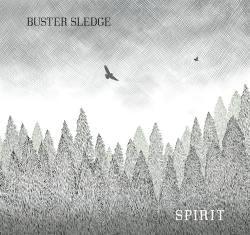
|
-
Buster Sledge is supposedly a bluegrass album made in Norway by a curiously-named trio, but the fjords don't seem to echo with too much of the high lonesome. American fiddle player Michael Barrett Donovan teamed with a Norwegian banjo player and guitarist and the odd result ranges from the countrified to the very strange (maybe not deliberately, though), although there is a nod towards Bill Monroe's sound.
Read Chris Nickson's review.
|

|
-
"It’s about 1 AM, in a small shiny modern cocktail bar in Oslo in 2007, during the folk music expo Folkelarm; an informal gathering before the showcases begin the following day. The chatter subsides as a striking, craggy-featured, long-black-haired character with a circular frame drum takes a seat in a corner, and begins a most extraordinary performance, riveting in its intensity as he emits guttural vocal sounds to the thud of beater on drum, his head close to its skin. Torgeir Vassvik is Sámi, a coastal Sámi from the village of Gamvik on mainland Norway’s northernmost tip, and it’s Sámi joik, but not like any I’ve heard before."
Read Andrew's review of Vassvik's latest recordin Gákti, as well as some background on the Sami people and music in the modern era.
|
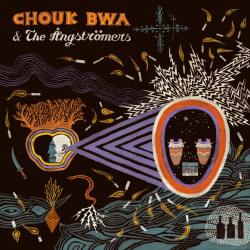
|
- Gonaives is an important Haitian city for many reasons; it’s the point where Haiti’s fight for independence began in the early 19th Century. It’s also long been the heart of the country’s Vodou practices- hurricanes, coups, and dictators notwithstanding. There are three temples, all continuing to practice different strands of vodou with links directly to Dahomey and the practice’s West African origins. This is a tradition, encompassing medicine, religion, music, and trance, that has been demonized cartoonishly by Hollywood and the West in general, as one more way to make black people seem either scary or primitive. Or both...
Chouk Bwa, whose hometown is Gonaives, since their 2012 inception, they’ve used drum and chant-based sounds to help people heal from hurricanes that have ravaged Haiti over the past 12 years, or to simply comment on vodou’s scarcity. As a result, they are aware of their own importance. Vodou Alé, recorded in Brussels in 2018 with Belgian electronic duo The Angstromers, applies dubby, hefty electronics to Chouk Bwa’s basic grooves, and the results are hypnotic on their latest recording, Vodou Alé.
Read Bruce Miller's review, listen to some songs and see a live performance video.
|
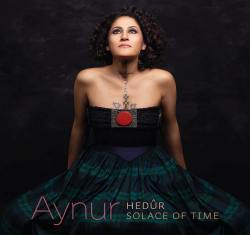
|
-
The seventh studio album from singer and composer Aynur Dogan finds these ears at a time when both physical and metaphysical distances have beset the world with unprecedented force. In such a climate, we seek humanity in every possible form, and hold on to it dearly for fear it might slip away, get trampled on in violent protest, or be silenced by the ignorance of pride. Hence the title Hedur, a word in her native Kurdish, referring to that moment of solace when spatiality and temporality become one in the self. Aynur makes a compelling and organic case for song as one viable way of achieving said solace, and does so by means of a voice that thrives on building bridges from one soul to another.
Tyran Grillo delves into the complex stories and music of Hedur: Solace of Time.
|
Support RootsWorld. Subscribe to Music of the Month.

|
-
Tidekverv (‘Timeturning’) is a lush, spare, and emotional project envisioned by Norwegian Hardanger fiddle player Benedicte Maurseth and vocalist Berit Opheim. They are joined on this recording by Norwegian musicians Rolf Lislevand (lute, electric guitar, and electric bass) and Håkon Mørch Stene (percussion, vibraphone, and slight and sensitive electronic accompaniment).
Thematically, Tidekverv is one piece in honor of the sun. Maurseth’s vision for the performance was rooted in the medieval ballad ‘Draumkvedet,’ which recounts the passage of Olav Åsteson as he falls asleep on Christmas Eve and his awakening on the twelfth day of Christmas... A passage through time is key to the work, whose rhythm is punctuated by the four days of the year most associated with the sun.
Read Lee Blackstone's review and listen to the music.
|
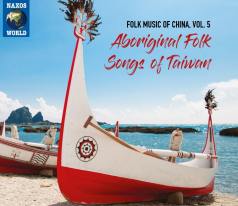

|
-
I'm guessing most people, even those with considerable knowledge of the musics of the world, listening to Aboriginal Folk Songs Of Taiwan with no information, would have no idea where it's from... These aren’t any kind of scratchy archive recordings; they were made in May 2014... Given that often people’s view of Chinese music is principally of Chinese classical music, particularly the instrumental music of such as guzheng, pipa, erhu and flutes, it’s very good indeed, and extremely enlightening, to have series that delves into the living village musics of this huge country, which is such a patchwork of different peoples whose cultures and music survive despite the dominance of the Han people (who make up about 92% of China’s population and are the world’s largest ethnic group). And it‘s particularly good that the very striking regional folk singing traditions of its estranged neighbour Taiwan are included.
Read Andrew Cronshaw's extensive review and listen.
Aboriginal Folk Songs Of Taiwan is our June selection for Music of the Month. Find out more and subscribe.
|
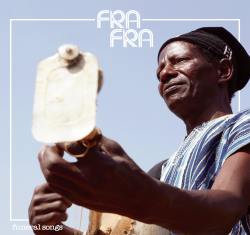
|
-
I was fortunate enough to spend a few weeks at the end of 2004 immersed in the complex, drum-focused Ewe culture, thanks the generosity of the chief of a small village - Anlo-Afiadenyigba - in the Volta Lagoon near Keta, deep in southeast Ghana. And aside from attempting to learn how to play the music, I was able to witness the local drum troupe, record their performances and rehearsals, and travel into the mountains with them for funeral rites. In fact, if one wants to hear this most radically intense drum-and-dance collaboration, funerals are often a good place to find it. For while Ghana’s cultures and languages shift from rural to urban and north to south, how they celebrate death with music can be found all over the country, as well as in the countries of their immediate neighbors... And the spirits know that right now, the world is experiencing death, thanks to covid-19. Which all makes Fra Fra- Funeral Songs The Fra Fra live in the North of Ghana. While the sounds they make may seem worlds away from the polyrhythmic assault that is Ewe drumming, the idea behind funeral celebration is the same...
Read Bruce Miller's full review and hear the music.
|
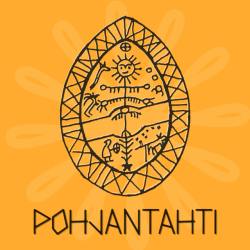
|
-
The Finnish trio that made up Pohjantahti released their self-titled debut in 1986, an LP of tremendous weirdness, based – perhaps inspired is closer - on the music of the Finno-Ugric nations, and also their own compositions which referenced the Kalevala, the Finnish national myth. With Sami joiking and overtone singing, it’s not an easy listen – the vocal opener, “Hyyperö, Huuhkana, Kuihkamo,” is about as accessible and inviting as Lou Reed’s Metal Machine Music, and at times the disc becomes disturbingly stranger than that. However, there are glimpses of light, like “Haapana Uni,” which offers a poignant, mournful melody, and “Kynnel Putoaa” a track that sounds as if it’s wandered away from a 70s prog album. At its core, though, this is a daring experiment that was possibly far ahead of its time. Or possibly any time. Reissued 34 years later, does it seem more in tune with the world? You’ll have to decide. - Chris Nickson
Listen for yourself.
|
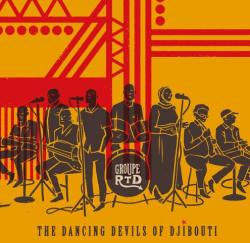
|
-
Since 1977, Djibouti has been under single party rule, and music is run entirely by the state, which means bands are all naturally part of state propaganda. Yet, this has not meant a lack of creativity or expression; rather, it’s merely kept the rest of the world from getting their hands on it. Yet, hours of Radio & Television Diffusion Djibouti (RTD) video clips, including music are readily accessible on Youtube, so it’s not like one can’t find vintage performances of, say, Fadumo Ahmed with a quick Google search. What this has meant as that no one has been able to secure an international release of music from the country, much less a visit into the archives. Until Ostinato paid them a visit in 2019, that is. Aside from getting to dig deep into RTD’s recordings and video, the label discovered Group RTD operating in the station’s studio who played daily national events; yet, at night, no longer on duty, they perform away from the control of the state. And are we ever lucky to finally hear the Dancing Devils of Djibouti.
Read Bruce Miller's full review and listen to some of the music.
|

|
-
Andrew Cronshaw has a long, deep history with music, most especially as a virtuoso on different kinds of zithers, and exploring the possibilities of sound they offer, whether as a solo artist working with some others, or as part of the group SANS. This new release features him literally alone, although the Zithers of the title number just two, a vintage, electrified 74-string model and something his own invention, the marovantele, which marries the Finnish kantele to the Malagasy box zither known as the marovany. The album, so typical of Cronshaw’s work, is impeccably constructed.
Chris Nickson delves into all these strings.
|
Support RootsWorld. Subscribe to Music of the Month.

|
-
The godparents of global grooviness are back with a spring in their step. London’s Transglobal Underground pioneered mixing dance beats with all kinds of worldly influences some 30 years ago. Haven’t done much (in their own name at least) this decade and now return to the fray with an 11-track album featuring members of the Transglobal family old and new (TGU having always been more of a loose collective than a band). So this is a welcome return for original bassman Nick Dubulah and vocalist Natacha Atlas. The latter lending her distinctive Middle Eastern flavoured vocals on three tracks here.
Jamie Renton finds that 'Walls Have Ears.'
|
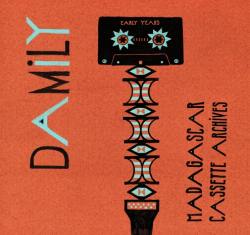
|
-
Before Damily settled in France in 2003 he’d been a professional musician in Madagascar since the mid-1980s and started releasing cassettes locally. This compilation, which features cassette recordings he made between 1995 and 2002, captures a style of music and open air relentless performance- known as “mandriampototsy”- that guitarist Damily helped cultivate in the Southwestern city of Toliara. At its most electric and hyper, Tsapiky, as the music was known in general and the recordings here in particular, is frantically kit-drum-driven with circular guitar lines snaking endlessly. The relationship to Congolese Soukous and Kenyan Benga are difficult not to notice in the drive, the hypnotic build, and close relationship music had with dancers’ bodies.
Bruce Miller explores the artist's 'Early Years: Madagascar.'
|
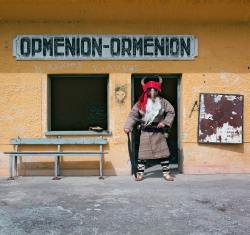
|
-
Teranga Beat, a label based in Dakar, Senegal, has focused most of its releases on unearthing lost recordings of performers from the Senegambia region. But because the label owner, Adamantios Kafetzis, is Greek, it’s not at all surprising that he would eventually turn his attention closer to the Aegean Sea. A visit to his father’s homeland of Drama, Greece for a cousin’s wedding allowed Kafetzis to make a much more current, but also ancient discovery. The band playing the pre-wedding feast was none other than Evritiki Zygia, and what he heard blew his mind. Here was a band predominantly playing ancient Thracian instruments- bagpipe, kaval, Thracian lyre, davul - but also including an organ and moog that not only underpinned the band’s sense of groove, but also helped pull their sound clearly into the present. And the results are passionate, hypnotic sculptures of breakneck melody and trance on the album Ormenion.
Read Bruce Miller's review and listen.
|
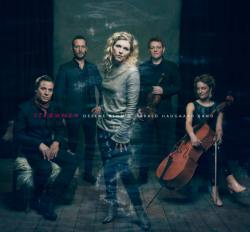
|
-
Helene Blum & Harald Haugaard Band: A new name, and a subtle change in sound: a little more varied, a broader mix of songs and instrumentals, plus a surprise or two. Both Blum and Haugaard (they’re partners in both life and music) grew up with traditional Danish folk. It’s at the core of what they do, but they’ve come to give it less emphasis over the years. With Strømmen, at times they’re reminiscent of 10,000 Maniacs, which is no bad thing at all. Witness the title track - with Blum’s voice as hypnotic as spun gold, able to capture a heart full emotion in a single inflection, while the musicians push the piece in a delicious, unexpected direction for the second half of the song.
Read Chris Nickson's review and listen to some of the music.
|
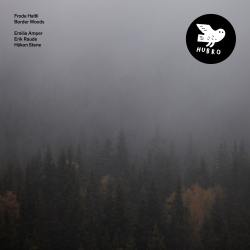
|
-
Frode Haltli is a brilliant Norwegian chromatic button accordionist with an illustrious track record... So you might expect Border Woods to open with the familiar sound of accordion. Not so. “Wind Through Aspen Leaves” is surging washes of wind gongs from one or both of the two percussionists in this quartet, Håkon Stene and Eirik Raude, then, sneaking in late on, only the subtlest of stretched single, reedy accordion notes...
he whole album might be described by some as having an ‘ambient’ feel, but there’s nothing aimlessly meandering here; I’ve described every track in more than usual detail, because every note has a point, presence and direction.
Read Andrew Cronshaw's review and hear some excerpts from the album
|

|
-
To speakers of Persian, Hebrew and Arabic, Divahn refers to a collection of songs or poetry. To seekers of art forms that celebrate the common ground between Jewish and Muslim cultures, the name is that of an all-female music ensemble whose latest release seeks to be a light in the darkness of divisions, be they religious, political or personal. Shalhevet shines accordingly, featuring a selection of traditional Jewish songs with linguistic, instrumental, tonal and topical additions culled from the Arabic (particularly Persian) world... While the roots of the music go as far back as the 11th century, it resounds in the present by focusing on messages of shared perspective.
Read Tom Orr's review and hear some songs
|
Support RootsWorld. Subscribe to Music of the Month.

|
-
The Unthanks have roots so deep in the tradition of Northumbria, their part of Britain, that they seem to embody the place, and they have those harmonies, unearthly and beautiful, between sisters Rachel and Becky. The Diversions albums they make are as important as the rest of their canon. In them they’ve explored, among other things, the songs of Anthony and the Johnsons, Robert Wyatt, and Molly Drake (Nick’s mother, if you’re not keeping score). On Diversions Vol 5 Live And Unaccompanied, they amble down the byways with a collection of material performed solely by the sisters, along with Niopha Keegan. Three voices, nothing more. And it’s a breathless, beautiful cloud of bliss...
Chris Nickson offers his review.
|
Support RootsWorld. Subscribe to Music of the Month.

|
-
Llio Rhydderch is a national treasure. She's Welsh, she plays the triple-harp, she lives on the island off the North Wales coast, and she's in a line of harpist-composers going back through the centuries. A very fine composer and improviser, also creating variations on traditional melodies, in terms of her skill, stature and importance, she's the present-day equivalent of the great Irish harpers such as Carolan... Sir Fôn Bach is a gem of an album, a glorious thing of crisp cascading notes in perfectly flowing musical structures; she has wonderful, subtle, communicative judgement of both rhythm and legato freedom, and her interpretations and variations bring these tunes to new life.
Learn more about the triple harp and the artist in Andrew Cronshaw's review.
|


|
-
Sometimes it can be better to accept and not examine things too deeply. Let it flow and enjoy it. Take Tranquebar's music. In many ways, what the Danish band create shouldn't work. The mix of banjo, voice, accordion, and percussion is beautifully ramshackle (at least on the surface). Yet it succeeds, and it does it in a fashion that's quite mesmeric. Ø is actually a collection of four EPs, each recorded on a different Danish island (hence the title, as Ø means island). And each island exerts a subtle influence on the shading of the music... With every track on the album, the band show the magic they have and how they knock it all into shape: not only can they write a good tune that takes unexpected turns but they create the kind of chorus that sticks in the brain (at its core, this is essentially acoustic, folky pop music, of a very twisted sort), and they can also arrange with wonderful imagination.
Read Chris Nickson's full review and listen
|

|
-
Band of Burns take the spirit and poetry of Robert Burns to unusual and interesting places. On The Thread, their much-anticipated debut studio album (following on from a live one a couple of years back) they filter the words of Scotland’s national bard through the kaleidoscope of influences each of the 12 members bring to the table: folk, blues, Mediterranean music, rock and jazz from Ireland, Turkey, England, Wales and Scotland. BoB have established themselves as a live force to be reckoned but can they deliver the goods in the studio?
Find out in Jamie Renton's review and listen to some of the music.
|
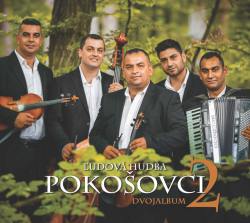
|
-
Pokošovci are a brilliant Romani family band, from the villages of Sumiac and Telgart in the Horehronie region on the edge of the Low Tatras in central Slovakia. The core line-up is the Pokos brothers Miroslav, Radoslav and Stanislav and cousin Vladimir, on violin, viola, double bass and viola respectively, plus Julius Markus on accordion. They’re a working band in a living tradition, playing at village events and with local folk-dance groups. For the double CD of their choice of Slovak and Romani repertoire of the region they’re joined by a host of singers from the family and beyond. Andrew Cronshaw presents the Slovakian band's L̕udová Hudbá 2,
and you can read and listen.
|
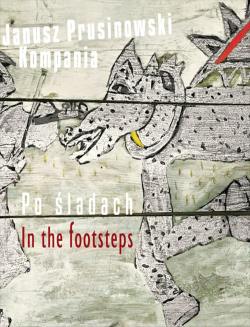
|
-
With its championing of old village musicians, event organizing, and its playing and teaching, Janusz Prusinowski Kompania has gone deep and revitalized Polish traditional mazurka dance and its music, generating a revival at home and spreading it in worldwide touring. A CD can't really give more than a hint of all that. Po ladach - In The Footsteps is their fourth album. No fundamental change in the sound, but it's as gutsy as ever. Basically it's the characteristic traditional wild-flying instrumentation of abrasive fiddle (Janusz Prusinowski), chugging basy (unstopped 3-string cello-sized bowed bass), and thudding stick-hit tambourine or baraban bass drum (Piotr Piszczatowski), but this band's distinctive sound is completed by the less traditional flute and reeds (Micha ak) and Szczepan Pospieszalski's trumpet, in mazurek and oberek's wiggly, asymmetric, hypnotic stretched three-beat rhythms. The vocals are led by fiddler Prusinowski, who also plays Polish accordion and hammered dulcimer.
Read Andrew Cronshaw's full review and hear some of the music.
|

|
-
The bass-heavy, Congo-to-Paris quartet Bantou Mentale has given whatever Afro-Rock is an update the form likely never saw coming. Indeed, this is a long way from mid-seventies Zamrock or any of the heavier sounds Nigeria had on offer at the time. Snare drum-driven funk, synth-squelched jagged riffing, and deep harmony vocals all compete for space in what often sounds like a sonic battle zone where instruments and voices poke at each other for space... the self-titled album takes styles informed by the West and runs them through a filter that allows the band’s talents to subvert the familiar... Lyrically, these songs offer naked frustrations with poverty, oil wars, and terrorism, or celebrations of departed friends, all dropped over grooves that mangle elements of grime, dub, street-funk, and whatever else.
Read Bruce Miller's review and listen to the music.
|

|
-
Having been influenced by music from all over, including tango and Euro-rock, Misia may, with good reason, aver that her latest album doesn’t derive from any one genre. With all due respect, however, Mísia is a creature of fado. It’s in her Portuguese blood. Fado runs through her musculature as well, giving form to her impassioned, even abject thoughts, and it ignites her nervous system, upping the intensity of her emotional delivery and thus her cachet. Through Pura Vida (Banda Sonora) , Mísia personifies the elegance of a time-old idiom that allows for genre-bending, yet never disowns its down-home, “selling flowers under the bridge” roots... This is an album that makes one look inward while marveling at the sheer beauty of this soundscape of pain and its release...
Read Carolina Amoruso's full review and listen to some songs from the album.
|
Browse more reviews from
2020
2019
2018
2017
2016
We Interupt Our Regularly Scheduled Magazine For This Important Announcement.
RootsWorld cannot survive without the support of our readers. If you want to hear great music and read great writers, then we need each listener and reader to contribute just a little to make it happen. Please join us!
Make a One Time Contribution Today!
|
$5.00
|
$10.00
|
$20.00
|
|
$40.00
|
$70.00
|
$100.00
|
Please contribute to our survival.
About RootsWorld: RootsWorld is a world music magazine started in 1993, pretty much at the dawn of the term "world music" as well as the pre-dawn of internet publishing (I suspect this was the first music magazine of any sort published on the www). Our focus is the music of the world: Africa, Asia, Europe, Pacifica and The Americas, the roots of the global musical milieu that has come to be known as world music, be it traditional folk music, jazz, rock or some hybrid. How is that defined? I don't know and don't particularly care at this point: it's music from someplace you aren't, music with roots, music of the world and for the world. OK?
All pages at RootsWorld are © 1992-2020 RootsWorld/ Cliff Furnald / FNI Multimedia Publishing, New Haven CT
The RootsWorld name is protected by US trademark law.
All picture and sound images are the property of the artists and record labels, and are protected by copyright. No file or part of a file may be used for any purpose, commercial or non-commercial, without the express written consent of RootsWorld or the other copyright owners.
About the use of sound files and copyright protections at RootsWorld
|
